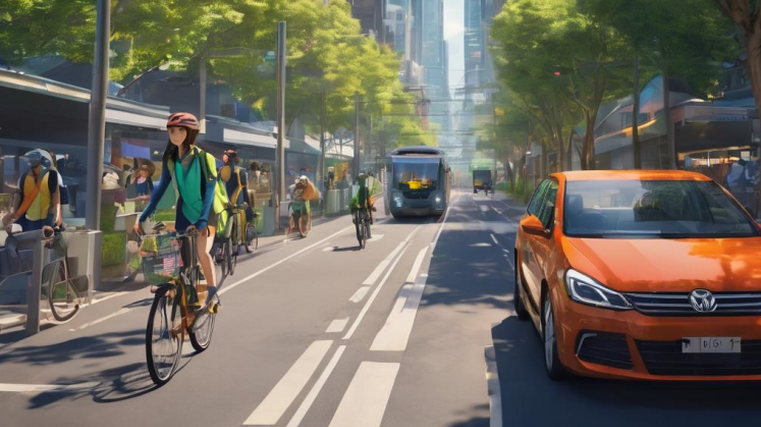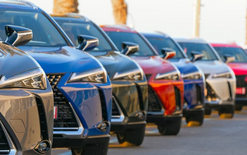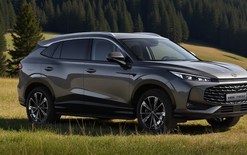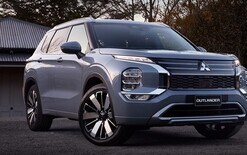Association looks to future

The Imported Motor Vehicle Industry Association (VIA) has published its vision for the future of transport in New Zealand looking out to 2030 and beyond.
The goals of reducing the harm caused by the transport system while maximising sustainability, fair-market competition and diversity of transport modes are all tackled in its briefing paper to the government.
The bottom line, according to VIA, is there will be a continued need for Kiwis to have privately owned vehicles but it stresses a plethora of policies is required to address challenges over the coming years.
Total vehicle strategy
VIA recommends a whole-of-fleet management approach is needed and that it should embrace a harm-based view of safety and progress decarbonisation. Any decisions must consider the types of transport New Zealand chooses, the environment in which Kiwis travel and the marketplace.
It is also calling for a holistic long-term fleet management programme that encompasses defining fleet characteristics, policy development, co-ordinated frameworks, long-term business certainty and vision-centric politics.
“This approach minimises risks and maximises opportunities for businesses,” states VIA’s briefing paper to Simeon Brown, Minister of Transport. “Developing visions for the future should be the foundation of fleet management.”
Then there’s shifting from the conventional occupant protection safety-rating system to one that’s harm-based, which considers emissions and potential harm from crashes.
There is also a need to reduce harm from transport, including accidents, while also addressing green concerns, encouraging fair competition, reducing environmental impact and empowering consumers.
VIA supports reducing carbon dioxide (CO2) emissions through policies such as weight-based levies or penalties to incentivise importing more efficient cars and continued efforts to replace models powered by internal combustion engines (ICEs) with electric vehicles (EVs).
It adds the fleet needs to be lighter because, internationally, up to an eight per cent reduction in emissions is achievable on the back of a 20 per cent decrease in average vehicle mass.
On top of this, VIA says the government must deal with the existing fleet through retrofitting low-carbon technologies or scrapping older ICEs, and should support shared-mobility options to cut vehicle kilometres travelled (VKT).
Choosing types of transport
VIA’s policies in this space are aimed at influencing demand and supply. They may impact what types of new and used models are imported or provide incentives that affect sticker prices.
It is lobbying for new safety standards in a phased approach that considers supply, affordability and efficacy, such as looking at mandating lane-keep functions or similar systems.
When it comes to the clean-car programme, the association is concerned about elements of it. VIA recommends that:
• More emphasis is needed on influencing consumer behaviour at the point of purchasing fossil fuels.
• Trading of clean car standard (CCS) credits between “new” and “used” credit account holders at a ratio of 1:2.
• While not opposed to removing the clean car discount, other demand incentives for low-emissions vehicle uptake need to be considered.
“The used-imports sector is being harmonised with the new-car sector on all vehicle standards,” says VIA. “Used imports may be ready for Euro 7 before the new industry.”
Making the fleet lighter – known as “lightweighting” – can enhance “environmental sustainability through fuel efficiency, reduced emissions and a reduction in harm when collisions do occur”.
Telematics can improve road safety, traffic management and environmental impact, and VIA supports the introduction of electric quadricycles while acknowledging safety concerns and fair policies for all importers.
The environment for transport
The association says transport choices can be affected by the environment in which vehicles will be deployed. It uses “environment” in the wider context of social, physical, financial and political issues.
It wants road-user charges (RUC) introduced for all light vehicles with weight-based levy adjustments so more is paid for heavier vehicles to reflect road usage. It describes charges for EVs in 2024 as a “good first step towards a broader RUC regime”.
When it comes to infrastructure and logistics, Port of Auckland provides stability and efficiency to the vehicle-import industry. VIA says any potential relocation would create massive disruption for businesses.
Nonetheless, the storms of 2023 have highlighted the need for resilience in transport infrastructure, so VIA says developing other entry channels to provide risk mitigation needs to be considered.
“Developing further supply channels depends on concurrent development of adequate supporting infrastructure distribution networks, such as roading, rail and coastal shipping.”
VIA notes electrification as the primary approach to cut fossil-fuel reliance. To avoid any resulting strain on production and distribution, there must be renewable energy strategies and network balance.
New Zealand needs increased and continued investment in EV charging stations and hydrogen fuelling facilities to make alternative fuel options more accessible.
The association believes an integrated approach to education in the car industry is required. This should include curriculum development, practical training programmes, equitable skill recognition and funding, and empowering participants to earn recognised qualifications. It adds:
• Workplace training should recognise and compensate businesses that train for providing their premises for education.
• New Zealand needs greater use of micro-credentials across skillsets viewed as “low skill” or that aren’t in recognised study programmes.
Walking and cycling are popular modes in urban areas so investing in infrastructure, such as bike lanes and pedestrian walkways, can make these safer and more accessible.
In areas not well-served or suited to public transport, VIA says shared-mobility services – such as ride-sharing or car-sharing – can be viable. And micro-mobility, the likes of electric scooters, bicycles and e-bikes, are widely available in urban areas and need to be accessible.
The transport marketplace
VIA’s vision for the future also encompasses market regulation, ensuring fair competition and consumer rights.
Its ideas include a carbon-dividend policy with all sectors paying a fair price for their pollution without using offsets and credits. It also involves introducing a tax on fuel and goods relative to CO2 emissions produced during manufacture and released on use.
The association is aiming to get parallel imports on the political agenda. It says they need to be redefined under NZTA regulations, as well as the criteria for determining if a vehicle is “new”, “like new” or “used”. A shift would promote fair competition, eliminate monopolistic advantages and safeguard consumer rights, it says.
VIA backs product stewardship schemes for vehicle components that respect the autonomy of the owner, who needs to make decisions about the treatment or disposal of end-of-life products.
Consumers have a right to repair or modify their car, states the brief paper. This requires fair access for independent repairers to technical documents available in New Zealand and that no entity should be able to use its market position to prevent competition in this space.
What if we do nothing?
VIA says its vision for the future of transport looking out to 2030 and beyond relies on consumer behaviour change and government policy action.
But if no actions are taken to support a transition to sustainable transport options, New Zealanders’ daily lives and activities would likely suffer significant negative impacts.
“In this scenario, daily life would be marked by challenges associated with increased VKT, increased carbon emissions, health impacts due to air pollution, higher transport costs and reduced quality of life,” states the briefing paper.
“While some have been able to access EVs – despite the likely ongoing cost and supply issues – the lack of policies and focus on infrastructure for electrification may lead to rolling brown-outs in some areas, which in turn has made EVs a potentially undependable mode of transport.”
Then the ability to make low-carbon choices and “enjoy a harmonious transportation ecosystem would be severely constrained”, could result in a less sustainable and less healthy way of life.





